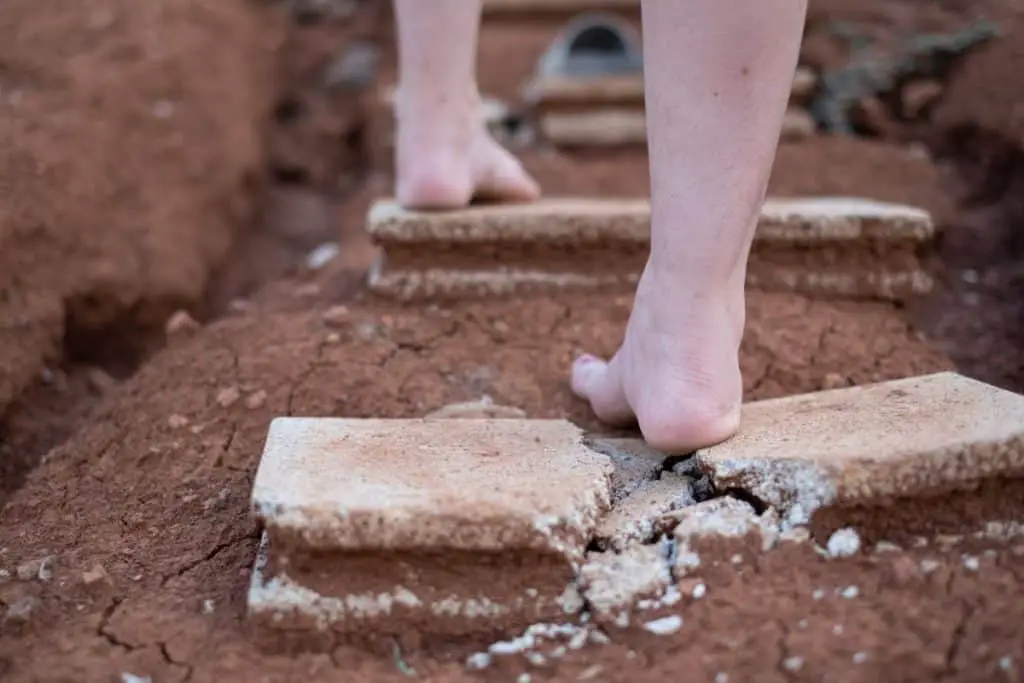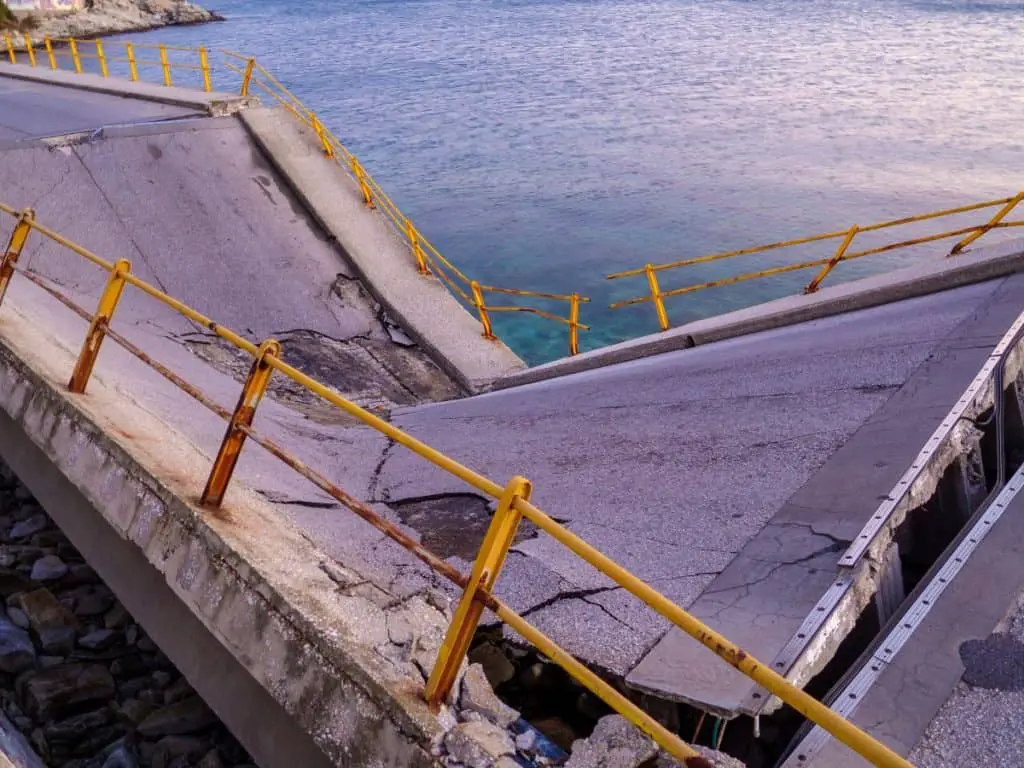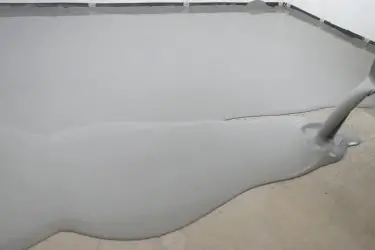Most concrete has some kind of reinforcement to help it keep its structure. Whether it’s rebar or a wireframe, reinforcement helps concrete keep from cracking and losing its form.
Two kinds of concrete often don’t include reinforcement. Mud concrete is usually used for either less consequential work or temporary structures. Plain concrete is thicker than reinforced concrete and is often used for residential basements and sidewalks.
So, not all concrete needs reinforcement! But maybe a little more background on what these types of concrete slabs actually are and how they’re used could be useful.

Table of Contents
Mud Slab
Mud slabs have been commonly used in the United States for quite some time. They are slabs of concrete that are usually of the minimum legal thickness, used to cover up patches of potentially problematic soil. It can be spotted by its rough surface.
It is still a regular practice to use thin mud slabs to create temporary workspaces in places where a reinforced slab would be too much work or too much money to produce.
In fact, a small slab of mud concrete can usually be made just out of whatever concrete is left unused after a big project is finished. Because it’s so thin however it’s hardly ever used for anything really important.
Mud slabs are sometimes also known as rat slabs for their role in shoring up exposed soil in the lower levels of buildings. For many years they were used simply to cover up dirt in places where it was exposed.
This was a fairly effective way to decrease the likelihood of buildings getting infested by rats.
Mud slabs are usually poured directly on top of soil or the top of a larger slab of concrete.
Because of their lack of material and reinforcement, they tend to deteriorate faster than other kinds of concrete do. Because of this, they generally aren’t used for important, permanent flooring.
Plain Slab
Plain slabs are still used throughout the world for projects where reinforcement isn’t necessarily needed.
Plain slabs need to be significantly thicker than other kinds of concrete. At the same time, they tend to be a little less long-lived due to the lack of reinforcement.
Like mud slabs, they are usually laid directly on top of the soil. However, because of the increased thickness of plain slabs, they can last for significantly longer.
Plain slabs are completely usable for many domestic projects and don’t require any particularly special treatment once they’ve been poured.
They are often used for sidewalks, which don’t usually need to hold up anything heavier than a bicycle. They also tend to be relatively cheap to place down compared to reinforced concrete for obvious reasons, making them attractive to towns and governments that may be flushed for cash.
However, it’s important to note that any kind of concrete that’s poured directly over the soil will always be vulnerable to receiving damage from creeping tree-roots or overuse.
Recent Experiments
Recently, scientists and engineers in Zurich, Switzerland invented a kind of concrete structure designed specifically to not need any reinforcement. Based on the vaulting style of gothic cathedrals, the shape of the slabs gives it a drastically increased tensile strength. Source
Although it is very cool, it may not be used for most concrete based projects. Because of the complicated form that needed to be molded perfectly onto both sides, the scientists needed to 3D print the slabs one at a time and then transported them when they were done.
They seemed to be almost more similar to bricks than traditional concrete, which is poured and dried on-site.
By using this form, the scientists were able to construct an entire building out of this experimental material without using any reinforcement. This might not become a common building technique for quite some time, but I thought that it warranted a mention in this article.
What Kinds Of Concrete Need Reinforcement?
So if the concrete doesn’t always need reinforcement, why spend money on reinforcements at all?
Well, a lot of concrete is meant to be load-bearing, which means that it needs to hold up large heavy objects.
Foundations and structural pillars aren’t the only kinds of concrete that are considered to be load-bearing.
Parking lots, garages, and even roads are also load-bearing, as they need to be able to hold up heavy cars or trucks for long periods of time.
Load-bearing concrete needs the extra strength that reinforcement can provide. While concrete is incredibly good at resisting pressure from compression, it can easily sustain damage from being pulled apart
This can be a serious problem for a material that needs to be used to hold up heavyweights. This is because even when it seems like there’s only one obvious source of material stress, there are usually many different forces acting on the concrete at any given time.
That’s where reinforcement like rebar and wireframe come in. They drastically increase the tensile strength of the concrete.
Does My Concrete Need Reinforcement?
The answer is probably yes. Reinforcing your concrete with either rebar or wire mesh is relatively cheap compared to repairing concrete that has developed cracks or other damage.
The effort required to repair or replace damaged concrete can take many hours of heavy labor. Not only is it difficult, but it will also cost at least as much as it did to install the concrete in the first place to replace it. This is one of those places where you need to spend money to save money.
Your slab ending up destroyed could be especially bad if it is meant to hold up something like a car. Frequently parking a heavy car on unreinforced concrete could easily lead to the destruction of both the slab and the car from a structural collapse.

While it may not be one-hundred percent necessary to add reinforcement to any concrete project, it is still usually recommended.
If you do decide that you won’t use reinforcement, be sure that your slab is thick enough to support people standing on it. If it isn’t, it will become unusable faster than you would like it to.




